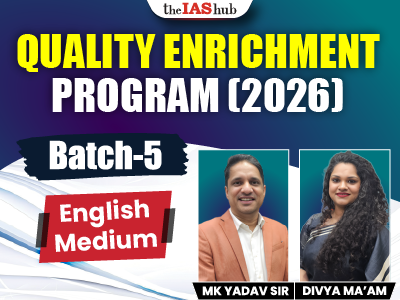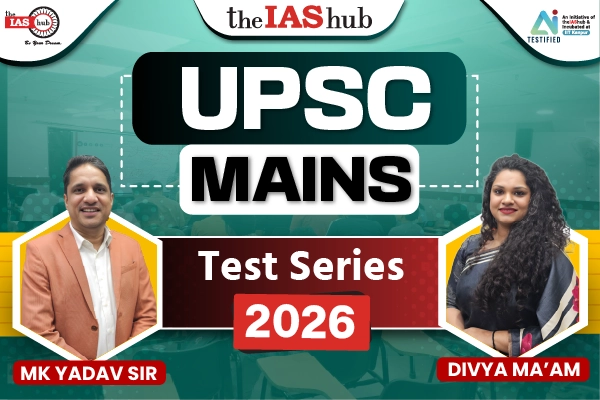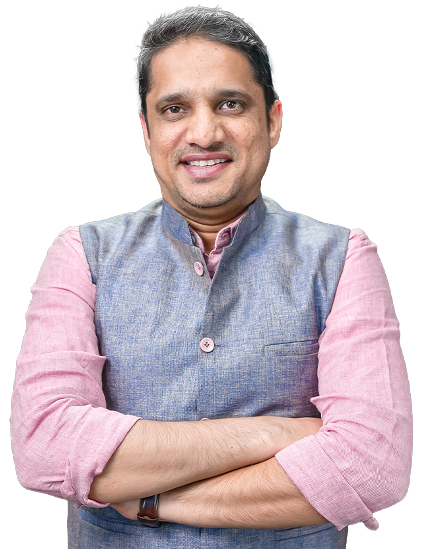Looking for Economy PYQ UPSC Prelims? Get a detailed analysis of past questions, trends, and preparation tips. Download Economy PYQ UPSC Prelims and boost your chances of success.

The UPSC Civil Services Examination (CSE) is one of the toughest competitive exams in India. The Prelims stage tests candidates across multiple subjects, including Economics, which plays a crucial role in the General Studies Paper I. Analyzing Economy PYQ UPSC Prelims is essential for understanding the pattern and weightage of economic topics.
Economy-related questions in the UPSC Prelims help assess a candidate’s grasp of economic concepts, current economic trends, and policy implications. By solving previous years’ questions, aspirants can:
Also Read: UPSC Prelims Syllabus
The number of economy-related questions varies each year. Over the past decade, the number has ranged between 15 to 25 questions out of 100. The table below provides an overview of Economy PYQ UPSC Prelims trends:
| Year | Economy Questions |
| 2023 | 18 |
| 2022 | 20 |
| 2021 | 22 |
| 2020 | 25 |
| 2019 | 19 |
The increasing focus on applied economics, fiscal policy, and international economic organizations highlights the importance of thorough preparation.
Also Read: UPSC Prelims PYQs
Aspirants should focus on key areas based on previous years’ questions. Common topics include:
Also Read: Books for UPSC
Studying UPSC CSE Prelims PYQ of Economy year by year helps in identifying repeated patterns.
Many economy questions are conceptual rather than factual. Strengthen your basics to answer tricky questions confidently.
Economic policies, budget announcements, and government schemes are frequently asked. Follow newspapers and official reports.
Taking economy-based mock tests improves retention and accuracy.
Aspirants can download Economy PYQ UPSC Prelims from:
Also Read: UPSC Prelims PYQs
Consider the following statements:
Statement-I: If the United States of America (USA) were to default on its debt, holders of US Treasury Bonds will not be able to exercise their claims to receive payment.
Statement-II: The USA Government debt is not backed by any hard assets, but only by the faith of the Government.
Which one of the following is correct in respect of the above statements?
(a)Both Statement-I and Statement-II are correct and Statement-II explains Statement-I.
(b) Both Statement-I and Statement-II are correct, but Statement-II does not explain Statement-I.
(c)Statement-I is correct, but Statement-II is incorrect.
(d)Statement-I is incorrect, but Statement-II is correct.
Consider the following statements:
Statement-I: Syndicated lending spreads the risk of borrower default across multiple lenders.
Statement-II: The syndicated loan can be a fixed amount/lump sum of funds, but cannot be a credit line.
Which one of the following is correct in respect of the above statements?
(a) Both Statement-I and Statement-II are correct and Statement-II explains Statement-I.
(b) Both Statement-I and Statement-II are correct, but Statement-II does not explain Statement-I.
(c) Statement-I is correct, but Statement-II is incorrect.
(d) Statement-I is incorrect, but Statement-II is correct.
Question 3
Consider the following statements in respect of the digital rupee:
Which of the statements given above are correct?
(a) 1 and 2 only
(b) 1 and 3 only
(c) 2 and 4 only
(d) 1, 2 and 4
With reference to the Digital India Land Records Modernisation Programme, consider the following statements:
Which of the statements given above are correct?
(a) 1 and 2 only
(b) 2 and 3 only
(c) 1 and 3 only
(d) 1, 2 and 3
Consider the following statements:
Which of the statements given above is/are correct?
(a) 1 and 2 only
(b) 3 only
(c) 1, 2 and 3
(d) 2 and 3 only
In India, which of the following can trade in Corporate Bonds and Government Securities?
Select the correct answer using the code given below:
(a) 1 and 2 only
(b) 2 and 3 only
(c) 1 and 3 only
(d) 1, 2 and 3
Consider the following:
3 .Currency swap
Which of the above is/are considered financial instruments?
(a) 1 only
(b) 2 and 3 only
(c) 1, 2 and 3
(d) 1 and 3 only
With reference to the sectors of the Indian economy, consider the following pairs:
| Economic activity | Sector |
| Storage of agricultural produce | Secondary |
| Dairy farm | Primary |
| Mineral exploration | Tertiary |
| Weaving cloth | Secondary |
How many of the pairs given above are correctly matched?
(a) Only one
(b) Only two
(c) Only three
(d) All four
With reference to physical capital in Indian economy, consider the following pairs:
| Items | Category |
| Farmer’s plough | Working capital |
| Computer | Fixed capital |
| Yarn used by the weaver | Fixed capital |
| Petrol | Working capital |
How many of the above pairs are correctly matched?
(a) Only one
(b) Only two
(c) Only three
(d) All four
With reference to the rule/rules imposed by the Reserve Bank of India while treating foreign banks, consider the following statements:
Which of the statements given above is/are correct?
(a) 1 only
(b) 2 only
(c) Both 1 and 2
(d) Neither 1 nor 2
With reference to Corporate Social Responsibility (CSR) rules in India, consider the following statements:
Which of the statements given above is/are correct?
(a) 1 only
(b) 2 only
(c) Both 1 and 2
(d) Neither 1 nor 2
With reference to the Indian economy, “Collateral Borrowing and Lending Obligations” are the instruments of:
(a) Bond market
(b) Forex market
(c) Money market
(d) Stock market
Consider the following statements:
Statement-I: Interest income from the deposits in Infrastructure Investment Trusts (InvITs) distributed to their investors is exempted from tax, but the dividend is taxable.
Statement-II: InvITs are recognized as borrowers under the ‘Securitization and Reconstruction of Financial Assets and Enforcement of Security Interest Act, 2002”.
Which one of the following is correct in respect of the above statements?
(a) Both Statement-I and Statement-II are correct and Statement-II is the correct explanation for Statement-I
(b) Both Statement-I and Statement-II are correct and Statement-II is not the correct explanation for Statement-I
(c) Statement-I is correct but Statement-II is incorrect
(d) Statement-I is incorrect but Statement-II is correct
Consider the following statements:
Statement-I: In the post-pandemic recent past, many Central Banks worldwide had carried out interest rate hikes.
Statement-II: Central Banks generally assume that they have the ability to counteract the rising consumer prices via monetary policy means.
Which one of the following is correct in respect of the above statements?
(a) Both Statement-I and Statement-II are correct and Statement-II is the correct explanation for Statement-I
(b) Both Statement-I and Statement-II are correct and Statement-II is not the correct explanation for Statement-I
(c) Statement-I is correct but Statement-II is incorrect
(d) Statement-I is incorrect but Statement-II is correct
Which one of the following activities of the Reserve Bank of India is considered to be part of ‘sterilization’?
(a) Conducting ‘Open Market Operations’
(b) Oversight of settlement and payment systems
(c) Debt and cash management for the Central and State Governments
(d) Regulating the functions of Non-banking Financial Institutions
Consider the following markets:
How many of the above are included in capital markets?
(a) Only one
(b) Only two
(c) Only three
(d) All four
Which one of the following best describes the concept of ‘Small Farmer Large Field’?
Consider the following statements:
How many of the above statements are correct?
(a) Only one
(b) Only two
(c) All three
(d) None
Consider the investments in the following assets:
How many of the above are considered intangible investments?
(a) Only one
(b) Only two
(c) Only three
(d) All four
Consider the following statements:
Statement-I: India accounts for 3.2% of global export of goods.
Statement-II: Many local companies and some foreign companies operating in India have taken advantage of India’s ‘Production-linked Incentive’ scheme.
Which one of the following is correct in respect of the above statements?
(a) Both Statement-I and Statement-II are correct and Statement-II is the correct explanation for Statement-I
(b) Both Statement-I and Statement-II are correct and Statement-II is not the correct explanation for Statement-I
(c) Statement-I is correct but Statement-II is incorrect
(d) Statement-I is incorrect but Statement-II is correct
Consider the following statements with reference to India:
Which of the statements given above is/are correct?
(a) 1 only
(b) 2 only
(c) Both 1 and 2
(d) Neither 1 nor 2
With reference to Central Bank digital currencies, consider the following statements:
Which of the statements given above is/are correct?
(a) 1 only
(b) 2 only
(c) Both 1 and 2
(d) Neither 1 nor 2
In the context of finance, the term ‘beta’ refers to
(a) the process of simultaneous buying and selling of an asset from different platforms
(b) an investment strategy of a portfolio manager to balance risk versus reward
(c) a type of systemic risk that arises where perfect hedging is not possible
(d) a numeric value that measures the fluctuations of a stock to changes in the overall stock market
In the context of finance, the term ‘beta’ refers to
(a) the process of simultaneous buying and selling of an asset from different platforms
(b) an investment strategy of a portfolio manager to balance risk versus reward
(c) a type of systemic risk that arises where perfect hedging is not possible
(d) a numeric value that measures the fluctuations of a stock to changes in the overall stock market
Question 13: Consider the following statements:
Statement-I: India’s public sector health care system largely focuses on curative care with limited preventive, promotive and rehabilitative care.
Statement-II: Under India’s decentralized approach to health care delivery, the States are primarily responsible for organizing health services.
Which one of the following is correct in respect of the above statements?
(a) Both Statement-I and Statement-II are correct and Statement-II is the correct explanation for Statement-I
(b) Both Statement-I and Statement-II are correct and Statement-II is not the correct explanation for Statement-I
(c) Statement-I is correct but Statement-II is incorrect
(d) Statement-I is incorrect but Statement-II is correct
Are you preparing for UPSC 2025? Join IAShub’s UPSC coaching batches to boost your preparation. Enroll now!
Understanding Economy PYQ UPSC Prelims is crucial for scoring well in the General Studies Paper. By analyzing trends, focusing on core topics, and practicing previous years’ questions, aspirants can enhance their preparation. Make sure to download Economy PYQ UPSC Prelims and integrate them into your study plan for better results.
The number of economy questions in UPSC Prelims varies yearly, ranging from 15 to 25 questions out of 100 in recent years.
You can download Economy PYQ UPSC Prelims from the official UPSC website, coaching institute portals, and resources like the Economic Survey and India Year Book.
Analyzing Economy PYQs helps aspirants identify recurring topics, understand trends, and improve accuracy by practicing real exam questions.
Focus on key economic concepts, practice previous year questions, and stay updated with current economic developments. Regular mock tests and revision are crucial.


Refine your answer writing skills and elevate your UPSC preparation with personalized support and expert feedback.
Fill out the form to get started with the program or any other enquiries !








Are you dreaming of becoming an IAS officer? Then, IAShub can be your best guide. It is one of the Best IAS Coaching in Delhi. Many students who want to clear the UPSC exam join IAShub for learning. The institute gives both online and offline classes. Their teachers are experienced and helpful. They easily explain every topic. Students also get notes, tests, and tips to do well in the exam.
IAShub is in Delhi and is trusted by many UPSC students. It offers coaching for every part of the UPSC exam – Prelims, Mains, and Interview. The classes are simple and easy to understand. The teachers are experts and guide students in the right way. IAShub is also known for its helpful notes, test series, and answer-writing practice. IAShub is the best coaching in Delhi and also gives UPSC Online Classes. This helps students from any place in India to learn. The online classes are live and also recorded. So, students can watch them anytime. These classes cover the full UPSC syllabus.
Here are some important services provided by IAShub:
The UPSC Civil Services Exam has three parts:
This exam is tough, but with the right guidance, it becomes easy to manage. Students must study smart and stay regular.
IAShub supports students from the beginning to the end. It gives the right books, tests, and notes. The classes are easy to follow, and the teachers are always ready to help. Students get personal doubt sessions too. The test series and answer checking help students learn where they need to do better. Also, free study materials save time and money.
IAShub also guides students during the final stage – the interview. Experts take mock interviews and give useful tips. This full support makes IAShub one of the best IAS coaching in Delhi.
